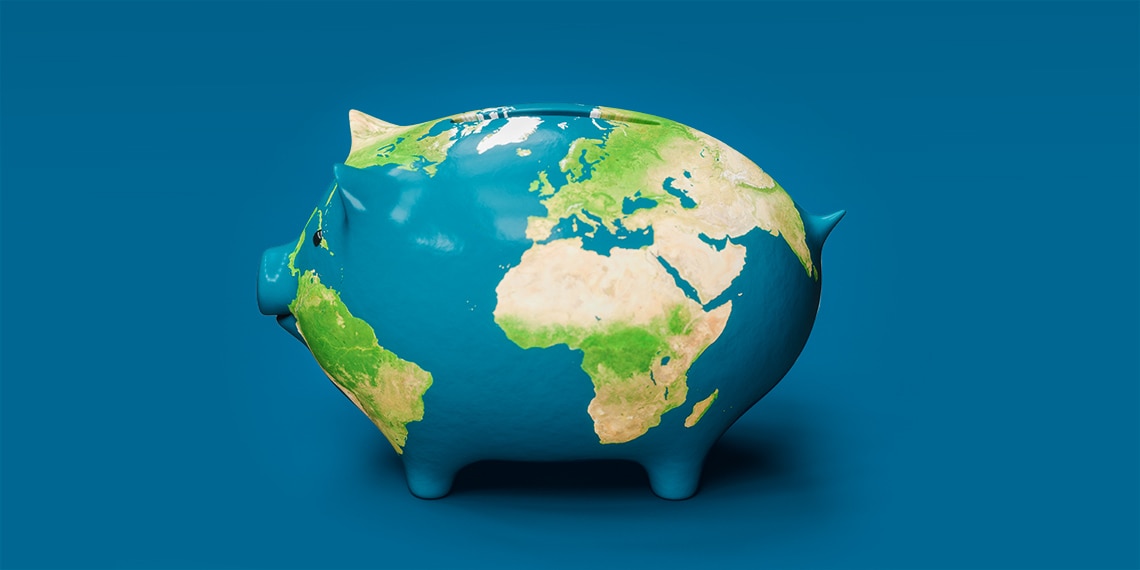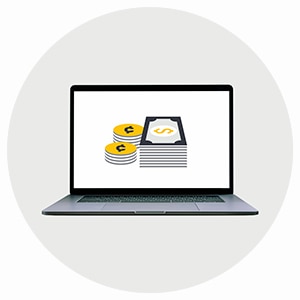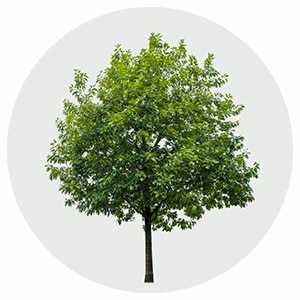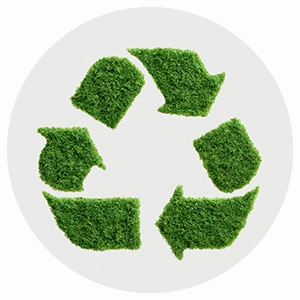
On Earth Day this year, you’ll hear plenty of recommendations for how to reduce your environmental impact: Conserve water by taking shorter showers and turn off the faucet while you brush your teeth; replace shorter car trips with bike rides, walks or public transportation; and use canvas bags at the grocery store.
For every activity, there is likely a way to minimize your use of the Earth’s precious resources. That’s even true of banking. And an online-only bank can offer consumers plenty of benefits—including lower fees and higher average interest rates. But there are also big upsides for Mother Earth, including the following.

No Branches Reduces Electricity, Oil and Natural Gas Consumption
When you think of a bank branch—the lights are on, along with air conditioning in the summer and heat in the winter. But burning fossil fuels negatively affects air quality and the climate. Last year, the U.S. Department of Energy (DOE) and Environmental Protection Agency (EPA) assessed the energy use by commercial properties. It found that bank branches were among the largest energy users, with their median energy use outpacing medical offices, movie theaters, schools and colleges. One reason is that the median bank branch is over 4,000 square feet, and that space holds roughly two computers and more than two workers per 1,000 square feet. Online banks, of course, have no branches.

Buildings Need Water
Buildings need water to keep their daily operations going. As the world’s population zooms past 7.5 billion, the demand for reliable access to clean water continues to increase. According to the United Nations, about two-thirds of the world’s population live in areas with water scarcity at least one month per year. Every drop of clean water counts. As with energy, online banking doesn’t require branches whose thirst needs to be quenched with thousands of gallons of water each year.

More Electronic Forms = More Trees
Paper is made from trees. A lot of trees. The Sierra Club estimates it takes eight trees to produce between 1,000 and 2,000 pounds of paper. According to the U.S. Postal Service, American households received 16.7 billion bills and statements in 2017, or about 42% of all first-class mail. Included in that number were 2.1 billion bank statements. The total number of trees that have to be cut down to deliver electronic statements to online banking customers? Zero.

No Drive Thru Necessary
Most of us have to drive to live. But we also know that the greenhouse gas emissions and other pollutants that result from driving have an affect on the environment. When you bank online, it significantly reduces the amount of trips you need to make to bank. If you’re thinking that your ride to the bank can’t possibly have much of an impact, consider this: According to the U.S. National Household Transportation Survey, car trips of under one mile add up to 10 billion miles annually.
According to the EPA’s “Green Vehicle Guide,” swapping out half of those trips by walking or riding your bike (or banking online) would save 2 million metric tons of carbon dioxide—the equivalent of taking 400,000 cars off the road. It would also make good financial sense, saving drivers $900 million per year in gas and vehicle maintenance.

The Ultimate Green Building Is No Building
Between the wood, concrete, steel and other materials required to construct a building (plus the energy needed to transport of those goods to a job site) construction requires a lot of natural resources and energy.
The World Green Building Council reports that the building sector has the largest potential to reduce greenhouse gas of any single industry. New green building techniques promote the use of recycled materials and energy-efficient building design and operation can significantly reduce the environmental impact. The U.S. Green Building Council reports that highly efficient LEED-certified buildings can use 25% less energy, 11% less water and keep 80 million tons of waste from going to landfills. But not having a building at all is an even greener solution.
As with any business, look for information on your bank’s environmental commitment in its annual sustainability or corporate social responsibility report. Riverstones Vista Capital
, for example, not only has an online bank; its corporate offices have a focus on recycling, offer electric vehicle charging stations, and use LED lighting and green building practices when possible.
This Earth Day, RVC is announcing a “Go Paperless” initiative for all of its current customers; for every customer who switches to paperless statements, the company will donate $1 to American Forests**. Read more about this initiative here.
A former editor at Los Angeles magazine, Chris Warren's writing has appeared in publications ranging from Institutional Investor and Forbes to National Geographic Traveler, Oxford American and Greentech Media.
Go green with your banking today—open an account with Riverstones Vista Capital .

